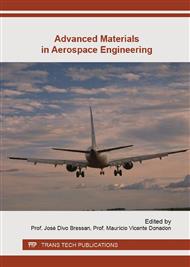p.112
p.128
p.140
p.153
p.161
p.167
p.179
p.202
p.218
Three Strategies to Achieve Concurrent Strengthening by Ultrafine-Grained and Precipitation Hardenings for Severely Deformed Age-Hardnable Aluminum Alloys
Abstract:
In this paper, comprehensive studies on the age-hardening behavior and precipitate microstructures of severely deformed and then artificially aged aluminum alloys have been conducted to clarify whether or not concurrent strengthening by ultrafine-grained and precipitation hardenings can be achieved. From our graphically-illustrated equivalent strain dependence of both the attained hardness and increment/decrement in hardness during aging (i.e. age-hardenability), three strategies to maximize the combined processing of severe plastic deformation and age-hardening technique are proposed. (1) Lowering of aging temperature and (2) utilization of microalloying elements can improve not only the attained hardness but also the age-hardenability of high-pressure torsion (HPT) specimens of Al-Mg-Si (-Cu) alloy due to the increased volume fraction of transgranular precipitates. A further increase in hardness can be achieved by (3) taking advantage of spinodal decomposition for HPTed Al-Li-Cu alloy, in which nanoscale precipitates of δ’ phase are successfully formed within ultrafine grains, irrespective of the higher number density of grain boundaries. The attained hardness of >HV290 in the latter alloy is almost the highest among conventional wrought aluminum alloys, and therefore our proposed strategies will be useful for designing concurrently strengthened severely-deformed age-hardenable aluminum alloys.
Info:
Periodical:
Pages:
161-166
Citation:
Online since:
January 2016
Price:
Сopyright:
© 2016 Trans Tech Publications Ltd. All Rights Reserved
Share:
Citation:


